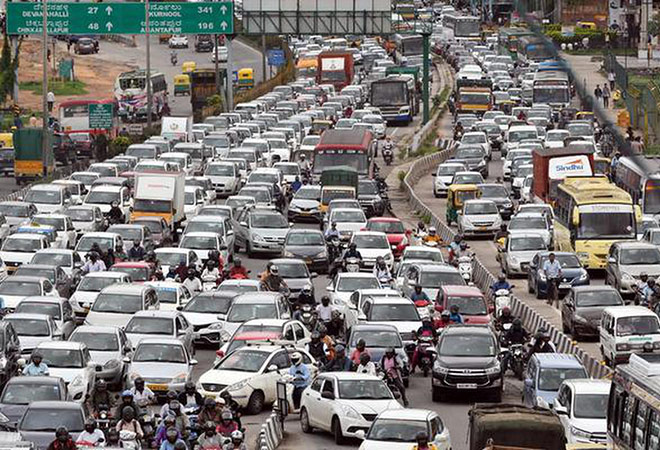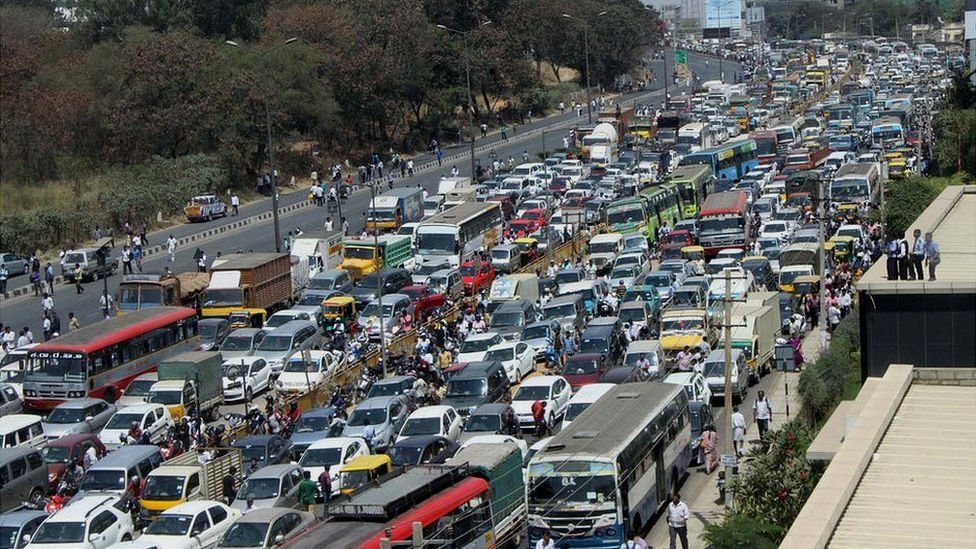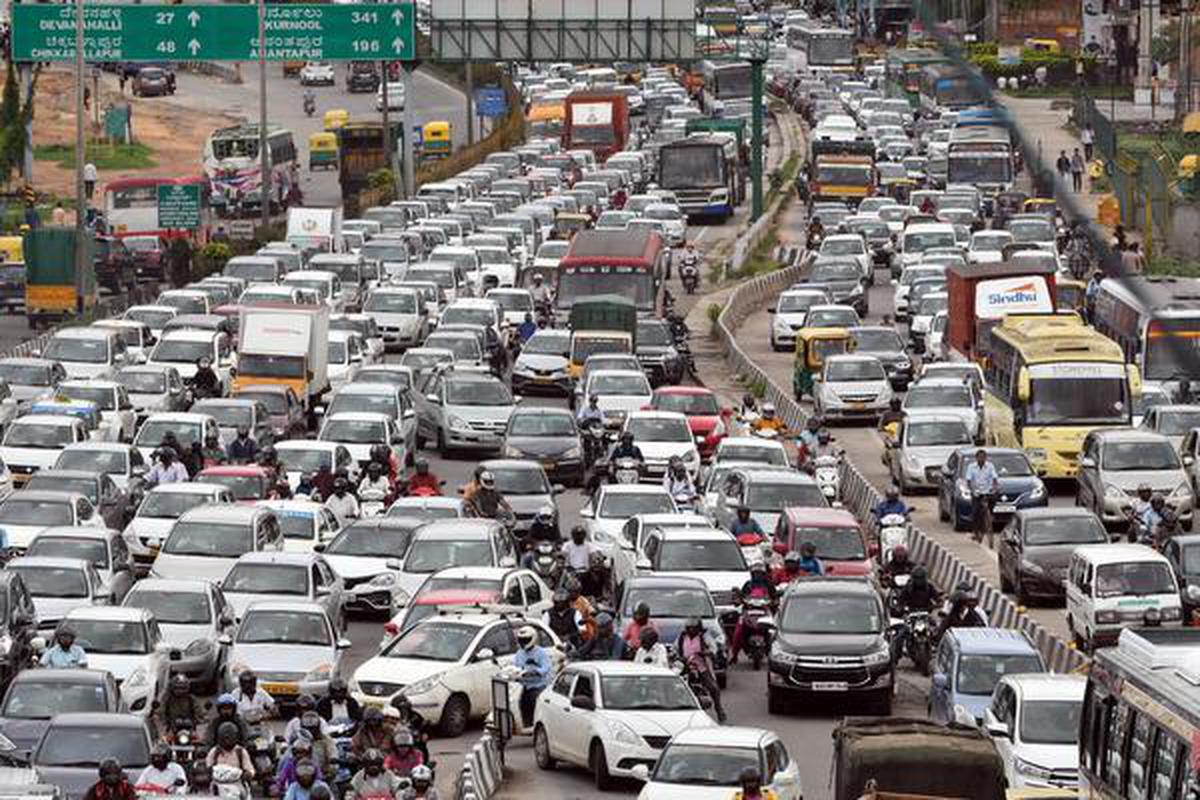Gridlock Galore: 5 Key Factors Behind Bengaluru’s Epic Traffic Jam on Wednesday

Gridlock Galore: 5 Key Factors Behind Bengaluru’s Epic Traffic Jam on Wednesday
Bengaluru, a bustling metropolis known for its vibrant IT sector and rapid urbanization, found itself in the throes of an unprecedented traffic snarl on a fateful Wednesday that left commuters exasperated and roads clogged for miles on end. As the city’s denizens collectively sighed in frustration, traffic police scrambled to decipher the chaotic puzzle that unfolded on the Outer Ring Road, which is often a lifeline for thousands of commuters. In their quest for answers, authorities identified five critical factors that contributed to this mammoth gridlock.
1. Post-Bandh Traffic Surge: The first domino in this unfortunate chain of events fell due to the repercussions of Tuesday’s city-wide bandh (strike). With several parts of the city coming to a standstill in protest, many employees, fearing disruptions on Tuesday, decided to abstain from work and make their way to offices on Wednesday. This influx of commuters, all attempting to get to their workplaces at around the same time, resulted in a doubling of the normal traffic volume.
2. Pre-Weekend Exodus: Adding to the chaos was the looming promise of an extended weekend. As Bengaluru’s populace braced for a brief respite, hordes of people decided to seize this opportunity for a quick getaway from the city. Whether it was a family vacation, a trip to a nearby hill station, or simply a desire to escape the urban hustle and bustle, the mass exodus exacerbated the congestion on the already strained road network.
3. Monsoon Misery: Bengaluru’s tryst with traffic woes during the monsoon season is no secret. However, on this particular Wednesday, rain played a decisive role in amplifying the chaos. Sudden downpours led to waterlogging in several areas along the Outer Ring Road. These inundated stretches turned into veritable bottlenecks, halting traffic and causing extensive delays.
4. Perennial Potholes: The city’s battle against potholes is seemingly never-ending. The pockmarked roads, especially prevalent during the monsoon, proved to be an additional stumbling block. Potholes, both large and small, acted as traps for unsuspecting drivers, causing many to slow down or swerve abruptly to avoid potential damage to their vehicles.
5. Vehicle Breakdowns: Last but not least, vehicle breakdowns emerged as a frustratingly common sight during the traffic mayhem. The relentless crawl, frequent braking, and start-stop motion took a toll on many vehicles, leading to overheating, engine failures, and flat tires. These stricken vehicles further clogged the already sluggish flow of traffic.

This perfect storm of factors led to a traffic jam of epic proportions, leaving commuters trapped in their vehicles for hours on end. While traffic police worked diligently to clear the road and ease congestion, the collective frustration of the city’s residents was palpable.
In the wake of this traffic debacle, it is evident that Bengaluru faces a pressing need for comprehensive urban planning and transportation management. The city’s rapid expansion, coupled with its status as India’s tech hub, has led to an ever-increasing influx of people and vehicles. This incident underscores the necessity for a robust public transportation system and improved road infrastructure to accommodate the burgeoning population.
Additionally, fostering a culture of alternative transportation modes could go a long way in alleviating the city’s traffic woes. Encouraging the use of bicycles, promoting carpooling initiatives, and investing in pedestrian-friendly infrastructure can help reduce the overreliance on private vehicles, ultimately easing congestion and minimizing the environmental impact of traffic jams.

Furthermore, addressing the perennial issue of potholes should be a top priority for city authorities. Timely maintenance and repair of roads, especially during the monsoon season, can prevent potholes from becoming perilous obstacles for commuters. Citizens have repeatedly voiced their concerns about road quality, and it’s high time that their grievances are addressed with concrete solutions.
Lastly, proactive communication and traffic management strategies are essential to mitigate the fallout from unexpected events like bandhs or heavy rain. Bengaluru’s traffic police should work in tandem with other relevant agencies to ensure the dissemination of real-time information, efficient rerouting of traffic, and swift resolution of issues like waterlogging or vehicle breakdowns. By adopting a holistic approach that combines infrastructure development, public awareness campaigns, and efficient traffic management, Bengaluru can hope to navigate its way out of the gridlock and into a smoother, more sustainable future.

In conclusion, the massive traffic jam that gripped Bengaluru’s Outer Ring Road on that fateful Wednesday serves as a stark reminder of the complex interplay of factors that can conspire to paralyze a city’s transportation network. As Bengaluru continues to grapple with its ever-growing population and infrastructure challenges, finding sustainable solutions to mitigate such traffic nightmares becomes increasingly imperative.




